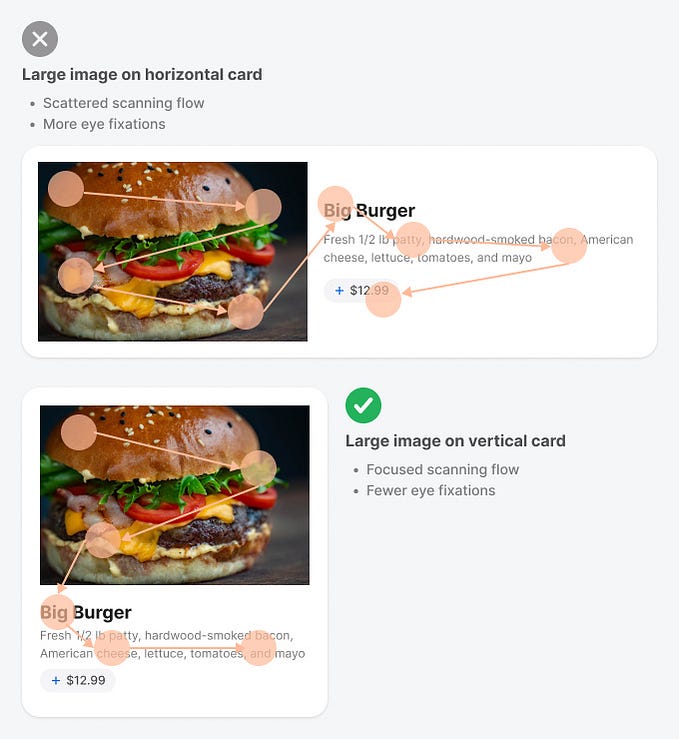
There are many User Experience principles and laws that a Designer should always look to follow. In this article, we’ve chosen a handful that we believe are the most important, and that we personally look to implement regularly. These laws and principles have not just been written by user advocates and Designers like Jakob Nielsen and Don Norman, but also by Psychologists who have years of experience studying human interaction and behaviour.
Some of these principles were coined decades ago, but are still super relevant today, a lot in which can be applied to design as a whole but even to your daily life. It always does surprise me how often some of these classic UX principles are missed in design today, but hopefully, by following these principles it will help increase the chances of your UX being knockout!
We’ve chosen to only give a brief summary of each principle, with further reading on each. This hopefully will make them more actionable, and easier to digest and hopefully create less friction when coming back to the list. We hope, anyway 😉
80/20
The 80/20 rule, also known as the Pareto Principle is a fascinating theory which claims that 20% of your effort can yield 80% of the results. This indicates that everything can be done more efficiently, we should focus most of our time on the critical areas that bring the largest benefit. This was first observed with a study showing 20% of the Italian population possessed 80% of the wealth. This theory can be applied to anything, from sports to investment and even computer programming. Microsoft, for example, noticed that by fixing the top 20% of computer bugs, 80% of the issues would be fixed. This, of course, is a rough estimate of a percentage, and can sometimes even be closer to 90/10.

Aesthetic Usability Effect
The Aesthetic Usability Effect explains that people often perceive visually appealing design as more intuitive and usable than those that are considered less pleasing on the eye, people believe that things that look better, will work better. Majority of the time customers will be more tolerant of minor issues when the design is aesthetically pleasing, this is due to the positive emotional response they feel. This also correlates to the theory of the Attractiveness Bias, which shows we are drawn to beauty. This highlights how imperative a well-polished user interface is, in conjunction with a solid UX.

Choice Overload
Choice Overload is a behavioural economics principle which highlights that a lot of the time more choice doesn’t always equal better results. The idea is that as the features increase, the complexity also increases, and the usability and performance decreases. Too many options can also be overwhelming to customers, which can even lead to analysis paralysis, where no decision is made at all. Choice Overload has parallels with Hick’s Law, which essentially explains that more choices result in more effort and longer decision times.
As Dietar Rams famously quoted “Less but better”.

Consistency
Consistency is an important principle which is constantly promoted by user advocates. It’s such a paramount principle that it’s included in Don Norman’s “Design Principles” and Jakob Nielsen’s “Usability Heuristics for User Interface Design”.
In a nutshell, a design should always feel consistent with the internal elements within the particular design. Similar functions should use similar components for achieving similar tasks. This highlights to the user that the results will be of the same kind. This can sometimes be referred to as internal consistencies.
There are also external consistencies which are conventions in which people are accustomed to away and externally from your design, such as how functions work as a whole. For example, an element which resembles a button, should always be clickable and lead you somewhere. Pressing a back button should take you back a step. This is similar to Jakob’s Law.

Goal-gradient Effect
The Goal-gradient Effect is a theory which states that people are more motivated the closer they get to a goal, rather than how far they’ve come. People are even more motivated when the end is in sight, the majority of people will even accelerate their current behaviour. This can be seen with loyalty cards, when there’s sometimes a stamp already filled in, this illusion of progress has been proven to work.
This is why it’s also paramount in interface design to show a user’s status and progress, such as profile completion and progress bars. Showing nothing will demotivate a user, and it’s possible that they’ll never complete the task.

Ikea Effect
The Ikea Effect is an interesting phenomenon which claims that people have a perceived higher value for something they’ve invested time in, or have created themselves. The theory even states that the actual level of effort correlates with the amount of effort, i.e high effort translates to a high value. This is why it’s useful when possible to get users to invest their time in your product and design, and allowing for creation and customisation. Even those long boring sign up forms could be useful if done in an engaging manner. All this time invested in your platform will increase their value perception, and increase retention.

Jakob’s Law
Jakob’s Law of Internet User Experience essentially illustrates that designing familiar experiences are preferred. The reason for this is that people are accustomed to how certain things work, it requires little to no thinking or a learning curve. However, when this law is violated, you can often find users confused as it immediately creates an unfamiliar experience, which in turn will most likely involve people feeling frustrated, and likely leaving your platform. There are some caveats of course, innovation is important especially if there is clear value. However the majority of the time it’s best to keep design familiar and avoid reinventing the wheel.

KISS
KISS which is an acronym for Keep It Simple Stupid plainly highlights that simple design works best, it should always be a key goal to drive for simplicity. One of the reasons for this view of minimalism, is that designs that are simple are generally faster and cheaper to build and implement, they are more reliable and easier to maintain.
The Simplicity theory also emphasises the same point, that simplicity should always be preferred, cutting unnecessary clutter is key!

Recognition Over Recall
In a nutshell this theory argues that we should use Recognition Over Recall as our memory for recognising is better than our memory for recalling things. For example, multiple-choice is easier to answer correctly than a short-answer question. Multiple-choice already provides with possible answers that jog one's memory. Another example, is using pictures and icons instead of text, again because it is easier to recognise, this is similar to the Picture Superiority Effect.
This also ties in with the Serial Position Effect, the hypothesis is that even an item’s position in a group has an effect on recall accuracy. Majority of the time people recall the first and last of a group with more success than the rest. This is sometimes illustrated in restaurant menus, where the prices of different items are strategically positioned.

Social Proof
Social Proof is a fascinating theory which explains that we as social beings follow what other people do, we can be easily influenced and persuaded by others especially if it’s in a large group. Product reviews, testimonials, expert advise and influencers are all ways in which we see this working so well today. Any chance of adding these types of Social Proof techniques will increase the likeliness of other people using your platform, as they’re more likely to believe in it.
The Fusiform Face Area has similarities with this theory, as it also indicates how much we’re influenced by other people, especially if they are looking or pointing at something in particular. Other things which really grab people’s attention are those that go back to our ancestral primate days. Back then we were most concerned about three things: can we mate with it, can we eat it, will it kill me. This is still incredibly relevant today, and can be constantly seen in advertising, with the use of sexual imagery, delicious food or something shocking or alarming. So use any of these methods to grab peoples attention!

To conclude
These laws and principles are super important, try to abide and use them when possible, even in your daily life. They’re not always completely relevant to every aspect of design, so always remember to do a variety of user testing… iterate, iterate and iterate! Remember to focus on the business goals of the product, and users, over the aesthetics and biases you may have about design and UX in general.
Further reading
80/20
Aesthetic Usability Effect
Choice Overload
Consistency
Goal-gradient Effect
Ikea Effect
Jakob’s Law
KISS
Recognition Over Recall
Social Proof
We would love to hear your thoughts, do let us know in the comments below if you have any questions or want to know more!
Would you like to work with us? We are a friendly bunch, come and say hello to fello 👋
Much ❤️ 🧡 💛 💚











